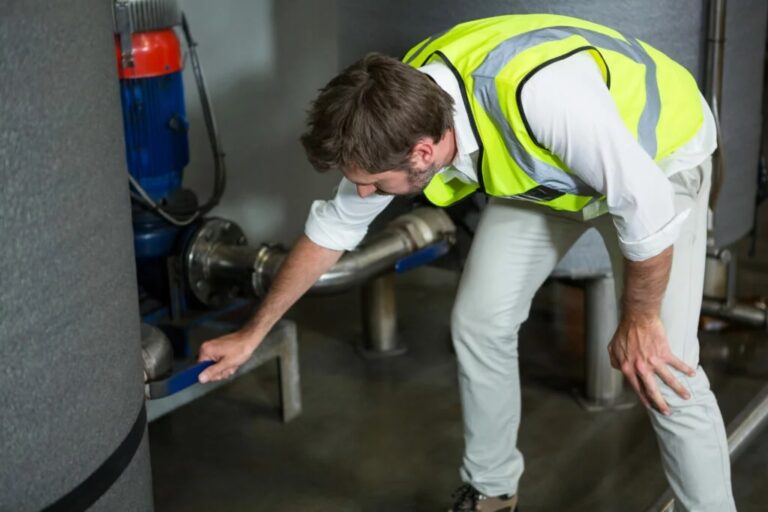
After a storm passes, the aftermath can be overwhelming. The strong winds, heavy rain, and flying debris can cause significant damage to homes. Knowing what to do next is crucial for ensuring safety and starting the recovery process. In places like Tampa, where storms are frequent and sometimes severe, being prepared can make all the difference. Tampa’s weather often brings unexpected and powerful storms that can leave homeowners facing extensive repairs.
Here’s a comprehensive guide on the steps to take after a storm damages your home, helping you act quickly and efficiently.
1. Ensure Safety First
The first priority after a storm is ensuring everyone’s safety. The immediate environment might be hazardous due to downed power lines, gas leaks, or structural damage.
Check for Hazards: Look for downed power lines, gas leaks, and other potential dangers. If there are any signs of these hazards, evacuate the area immediately and contact the appropriate authorities.
Evacuate if Necessary: If your home is severely damaged or unsafe, evacuate to a safe location.
Wait for Clearance: Only return to your home once authorities have declared it safe. Safety should always come first to avoid any injuries or accidents.
2. Assess the Damage
Once it is safe to return home, assessing the damage is the next critical step. A thorough inspection will help you understand the extent of the damage and plan the necessary repairs.
Careful Inspection: Walk around your property and carefully inspect the roof, windows, and structure. Look for visible signs of damage like broken windows, missing shingles, and water intrusion.
Contact a professional roofing company like Southern Pro Restoration for a detailed assessment of the damage and provide a comprehensive repair plan. Their expertise will ensure that all damage is identified and properly addressed.
Document Everything: Take photos and videos of all the damage. This documentation will be essential for insurance claims and for contractors to provide accurate estimates.
3. Contact Your Insurance Company
It is important to notify your insurance company as soon as possible. They need to be aware of the damage to start the claims process and provide the necessary support.
Notify Promptly: Contact your insurance company immediately to report the damage. Provide them with the documentation and photos you took during your inspection. Timely notification can speed up the claims process.
Understand Your Policy: Review your insurance policy to understand what is covered regarding storm damage. Be clear about deductibles, coverage limits, and any exclusions. This will help you know what to expect from the claims process.
Provide Detailed Information: When filing your claim, give detailed information about the damage. Include dates, times, and any relevant information about the storm and the damage it caused. The more precise you are, the smoother the claims process will be.
4. Prevent Further Damage
Taking steps to prevent further damage to your home is crucial while you wait for permanent repairs. Temporary fixes can save you from more extensive and costly repairs later.
Temporary Repairs: Make temporary repairs to prevent additional damage. For instance, tarps can be used to cover a damaged roof or board up broken windows. These measures can help protect your home from further exposure to the elements.
Water Removal: Remove any standing water from your home to prevent mold growth and further structural damage. Use wet vacuums, fans, and dehumidifiers to dry out affected areas.
Keep Receipts: Save all receipts for materials and services used for temporary repairs. Your insurance company might reimburse these costs.
5. Hire Reputable Contractors
Choosing the right contractors for permanent repairs is important. Quality workmanship ensures your home is restored safely and efficiently.
Research Contractors: Look for reputable contractors who specialize in storm damage repairs. Research their credentials, read reviews, and ask for references.
Check Reviews and Credentials: Verify the contractors’ licenses, insurance, and certifications. Check online reviews and ratings to ensure they have a good reputation.
Avoid Scammers: Be wary of door-to-door contractors who might take advantage of the situation. Scammers often appear after storms, offering quick fixes at low prices.
6. Begin the Repair Process
Starting the repair process involves detailed planning and coordination with your chosen contractors and insurance company.
Develop a Repair Plan: Work with your contractors to create a detailed repair plan. Ensure all damage is addressed and that the plan includes timelines and cost estimates.
Obtain Permits: Make sure all necessary permits are obtained before starting the repair work. This step is crucial to ensure the work complies with local building codes and regulations.
Stay in Communication: Keep in regular contact with your insurance company and contractors. This communication helps ensure everything is on track and that any issues are promptly addressed.
7. Review and Inspect Repairs
Once the repairs are completed, a thorough review and inspection ensure the work meets your expectations and is up to standard.
Inspect the Work: Carefully inspect the completed repairs. Check that all agreed-upon work has been done correctly and that there are no lingering issues.
Professional Inspection: Consider hiring a professional inspector to review the repairs. An independent inspection can provide additional peace of mind.
Address Issues Promptly: If you notice any problems or unfinished work, address them with your contractors immediately. Ensuring everything is properly fixed is essential for your home’s long-term safety and value.
Conclusion
Dealing with storm damage can be stressful and overwhelming, but knowing the right steps to take can make the process much more manageable. Start by ensuring everyone’s safety, then assess the damage and contact your insurance company. Prevent further damage with temporary repairs and hire reputable contractors for the permanent fixes. Once repairs are complete, thoroughly inspect the work to ensure everything is done correctly.
In storm-prone areas like Tampa, having a plan in place and knowing who to call can make all the difference. Their expertise and professionalism can help you navigate the repair process smoothly and efficiently. Stay prepared and informed to handle any future storms effectively.






